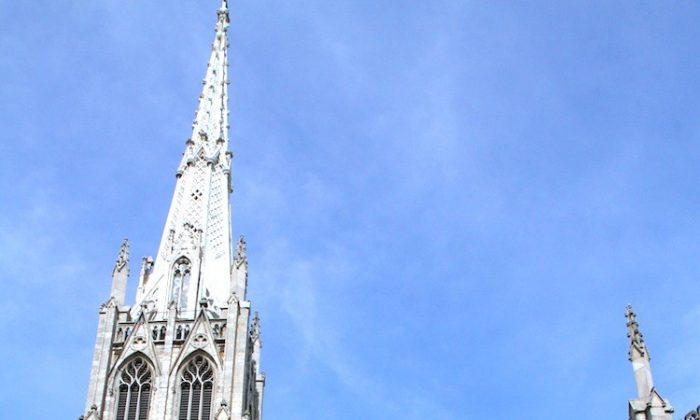NEW YORK—Emerging from the NYU-Eighth Street station, the impressive steeple of Grace Church juts out from the rectangles and straight lines of the surrounding cityscape, juxtaposed against an azure sky and puffy alto-cumulus clouds.
Not only is Grace Church an expression of faith, it is a “significant achievement of neo-Gothic architecture,” says the calm male voice on the church’s cell phone tour.
The church was built from 1843 to 1846 by “brash, confident, yet untested” then-23-year-old James Renwick Jr., who later built St. Patrick’s Cathedral in New York and the Smithsonian Institution in Washington, D.C.
The history of Grace Church traces to the Church of England, through Anglicans that accompanied the first English settlers to Manhattan Island in 1770.
The first service was held in 1808 at the original Grace Church on the corner of Broadway and Rector, several miles from the current Broadway and East 10th location.
Wood, used to build the steeple, was replaced by marble in 1883.
Windows that were originally plain glass have, over the years, been replaced with resplendent stained glass windows depicting various scenes of religious lore. One wealthy parishioner donated a stained glass window in 1879. Within 10 years, 36 of the 46 windows were stained glass, donated by other churchgoers.
A private garden is off the church’s west side while the right has a playground. There are ongoing renovations to the chancery, built in 1879 for children’s Sunday school, and the “honor room,” named for inscriptions of head choirboys and head choirgirls names around the inner doorway. The honor room also houses artifacts from the old Grace chapel.






Friends Read Free